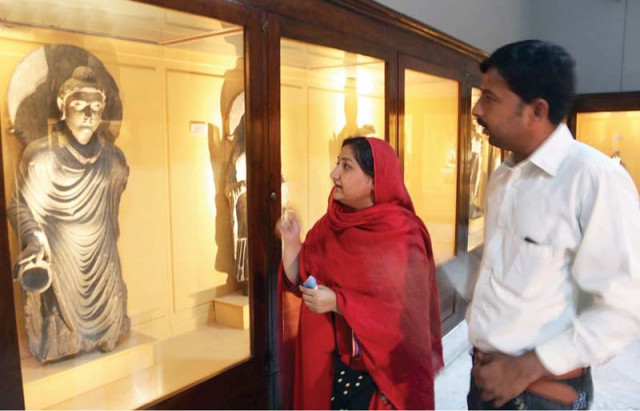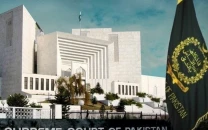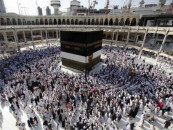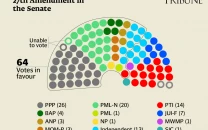World Museum Day: Peshawar waives entry fees
Not many visitors make way to avail freebie.

Visitors look at a sculpture of Buddha in Peshawar Museum. PHOTO: ONLINE
The gates were open for all and the entry fee was waived for visitors, said Bakht Muhammad who is in charge of the gallery. However, nothing was a good enough incentive for the city’s denizens to make their way to the museum.
Peshawar Museum houses nearly 14,500 items and in essence spins a rich visual narrative, such as tales from the life of Gautama Buddha through the relics from those times. The magnificent red-brick building is situated on Sher Shah Suri Road and is a blend of Mughal and British architecture. Renowned historian Dr Ahmed Hassan Dani (late) described it as a Curzonian structure; a mix of oriental feature of the Mughal era and bits of European churches.
In old days
The building also has a history before it was turned into a museum. A celebrated archaeologist and former curator of the museum, Nidaullah Sehrai, told The Express Tribune the structure was built by the British in 1905 and was known as Victoria Memorial Hall. The hall served as a place where British officials living in Peshawar would gather.
These officials were carrying out excavations across the region and the artefacts they found were being taken to other museums. However, Sehrai said Victoria Memorial Hall was later turned into a museum with a Hungarian-British archaeologist, Aurel Stein, as its first curator.
In all over Khyber-Pakhtunkhwa, said Directorate of Archaeology Director Professor Dr Ihsan Ali, there are 13 museums.
Inside the museum
Peshawar Museum is housed on two storeys. There are five galleries, different ones featuring terracotta figurines, weapons, jewellery, bowls as well as coins from the Indo-Greek period.
One gallery is lined with photographs from the British Raj. In another chamber, sculptures tell the story of Buddha’s life – taking birth from the dream of his mother, Maha Maya, till his cremation.
Not only are artefacts placed in the galleries, there are also architectural pieces like pillars and railing. “Usually stories on a stupa are carved on a relief panel and decorations with architectural aspects were used to put breaks in the stories,” said Sehrai. “The most significant aspect of the Gandhara art is that its relics are individual pieces unlike findings from Afghanistan and Taxila that are part of stucco structures.”
The museum also has on display a casket discovered from Shah ji Dheri located on the outskirts of Peshawar. The casket is said to contain the bones of Buddha, said Sehrai. Not to neglect Islamic history, a gallery is dedicated to Islamic manuscripts and paintings. Belongings of Tehreek Mujahideen leader Syed Ahmed Barelvi, who was a revolutionary of his times in India, and edicts of Mughal emperor Shah Jehan inscribed on stones are also showcased in this house of history.
Published in The Express Tribune, May 19th, 2015.













COMMENTS
Comments are moderated and generally will be posted if they are on-topic and not abusive.
For more information, please see our Comments FAQ